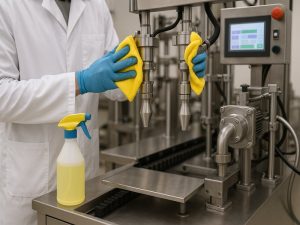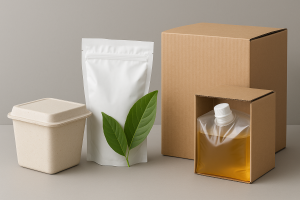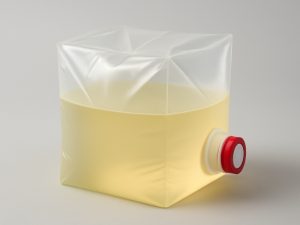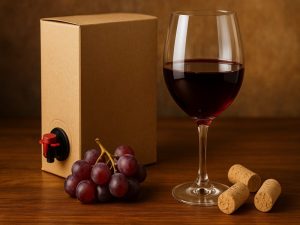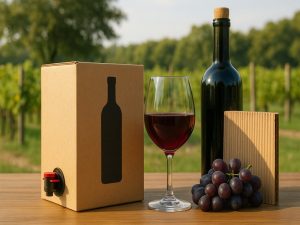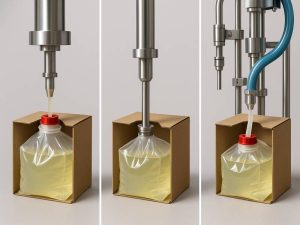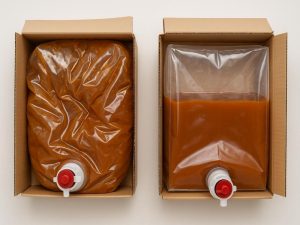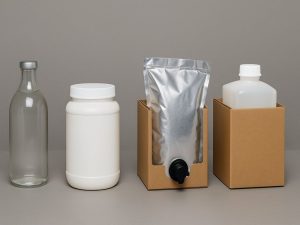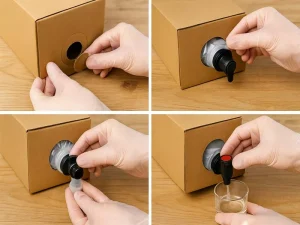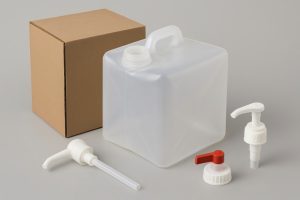
What Is CUBITAINER? A Complete Guide for B2B Packaging, Food, Chemical & Industrial Applications
Packaging is evolving as brands seek safer, lighter, and more efficient ways to transport liquids and semi-liquids. Among flexible containers, the CUBITAINER® has become widely used across food, chemical, cosmetic, and laboratory industries thanks to its durable, collapsible design and compatibility with many dispensers—making it a strong alternative to rigid bottles and jerry cans. What Exactly Is a CUBITAINER? A CUBITAINER is a collapsible, cube-shaped liquid container typically made from low-density polyethylene (LDPE). It is designed to hold a wide range of liquids—food-grade ingredients, chemicals, reagents, cleaning solutions, oils, and beverages—while offering superior flexibility and lightweight handling. It consists of two main components: Inner LDPE Cubic Bottle (Flexible Structure) Outer Corrugated Box or Support Carton (Rigid Protection) The inner bottle collapses gradually as the liquid is dispensed. This collapse prevents air from entering the container, thereby reducing oxidation, product contamination, and waste. CUBITAINERS were originally developed as an alternative to rigid HDPE bottles, offering the same stability but with far better dispensing control, storage efficiency, and environmental benefits. Structural Features of a CUBITAINER The design of a CUBITAINER is highly engineered to ensure durability, collapsibility, and leak prevention. Its structure includes: LDPE Flexible Container High-clarity LDPE allows product visibility Semi-rigid but collapsible walls Smooth interior for full product evacuation Compatible with many food- and chemical-grade liquids Lightweight and odor-free Molded Handles Built-in ergonomic handles Easier pouring and transportation Reduced risk of user spillage Tamper-Evident Spouts & Caps Available in different diameters Prevent leakage during transportation Support pump heads, taps, and dispensing valves Outer Corrugated Box Often made of strong kraft corrugated board Provides stacking strength Adsorbs impact to protect the LDPE bottle Optional branding, printing, and color customization Why Choose CUBITAINER? Key Advantages Manufacturers choose CUBITAINER because it combines the advantages of rigid containers with the convenience of flexible packaging. Its benefits include: Space Efficiency Cube shape optimizes pallet loading Nested shipping (collapsed) reduces freight cost by up to 50% compared with rigid jerry cans Lightweight, lowering total transport weight Exceptional Product Protection No air ingress during dispensing Hygienic sealed system Ideal for oxygen-sensitive liquids like beverages, oils, or chemicals Sustainable & Low Waste Uses less plastic than rigid HDPE containers Fully recyclable LDPE Outer boxes are recyclable paperboard Versatile and User-Friendly Compatible with manual taps, pump dispensers, and filling lines Easy to carry Suitable for controlled dosing Cost-Effective Storage & Shipping Collapsible design reduces warehouse volume Lower shipping cost Reduced breakage compared with glass or hard plastic Typical Sizes of CUBITAINER Most suppliers offer from 1 liter to 20 liters, though custom sizes exist. Common CUBITAINER Sizes & Their Typical Uses Capacity Typical Use Cases Notes 1–2 L Laboratory chemicals, cosmetics, and pharmaceutical reagents Easy manual dispensing 3–5 L Food sauces, oils, syrups, and cleaning detergents Most popular size 10 L Beverage syrups, industrial solvents Great cost-to-volume balance 18–20 L Bulk chemicals, sanitizers, automotive liquids Replaces 20L HDPE jerry cans CUBITAINER vs Bag-in-Box vs Jerry Can To understand where CUBITAINER excels, it’s useful to compare it with other packaging systems. CUBITAINER

